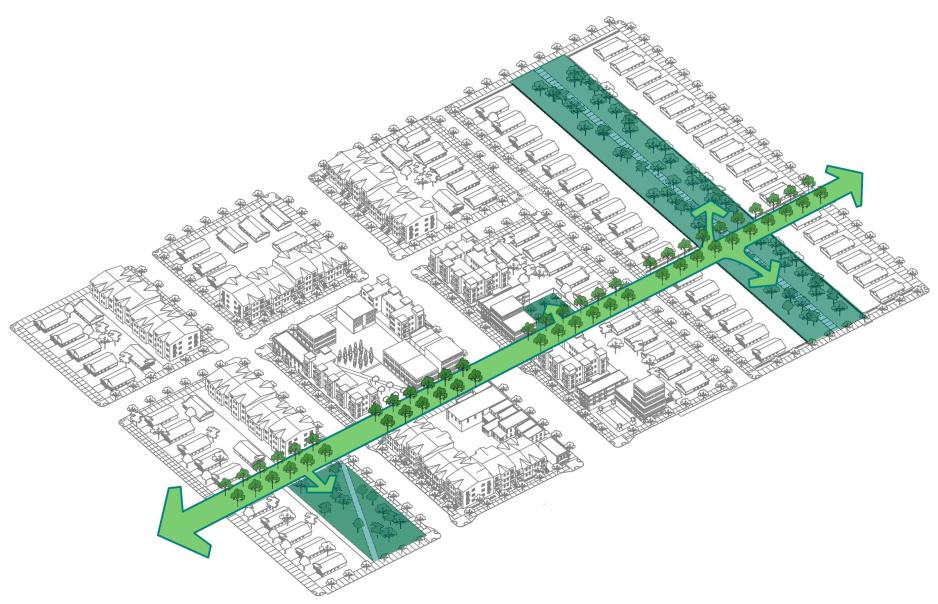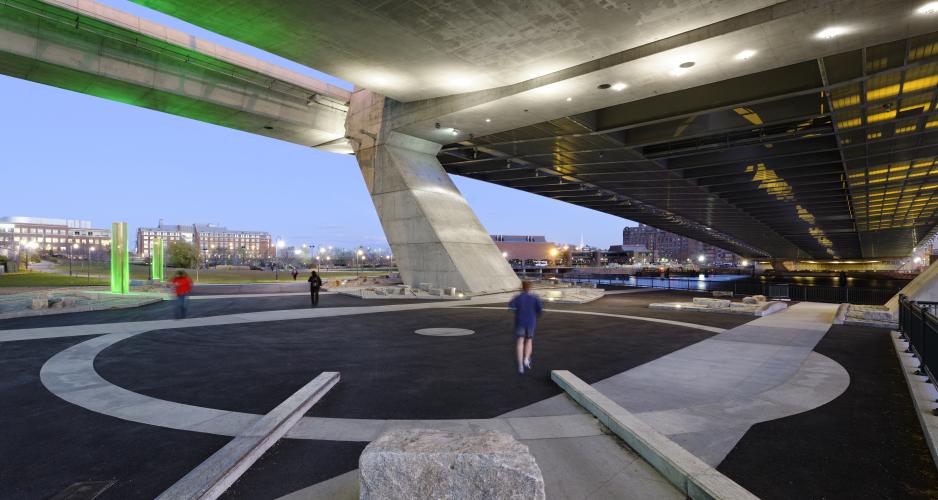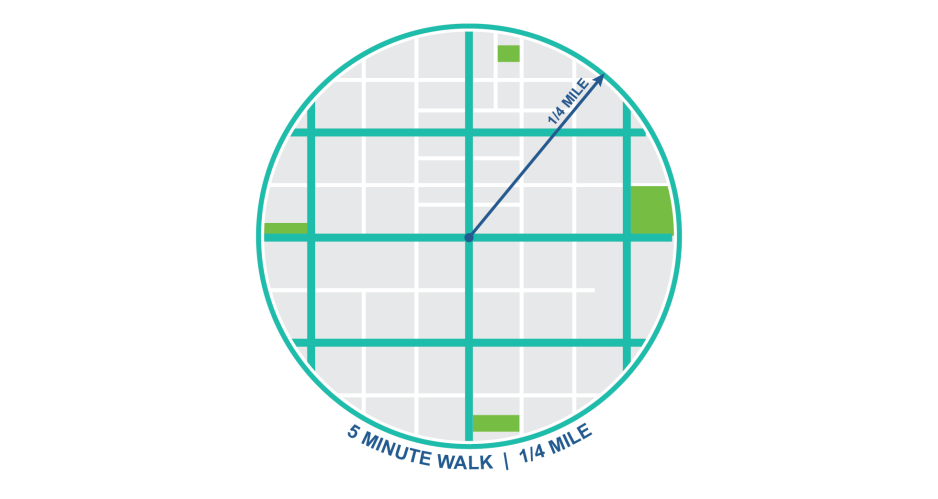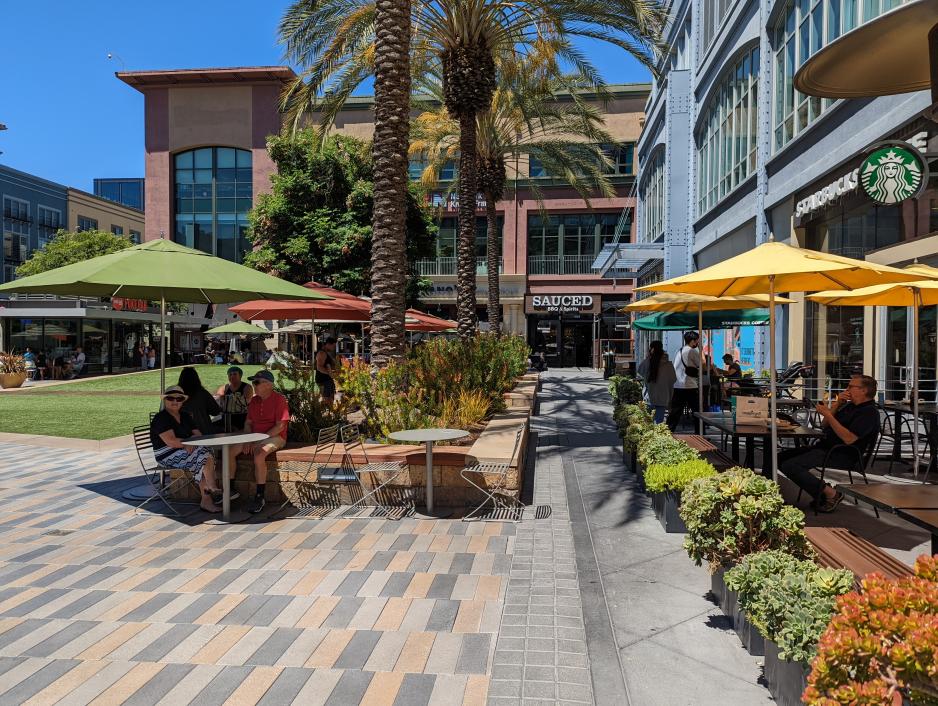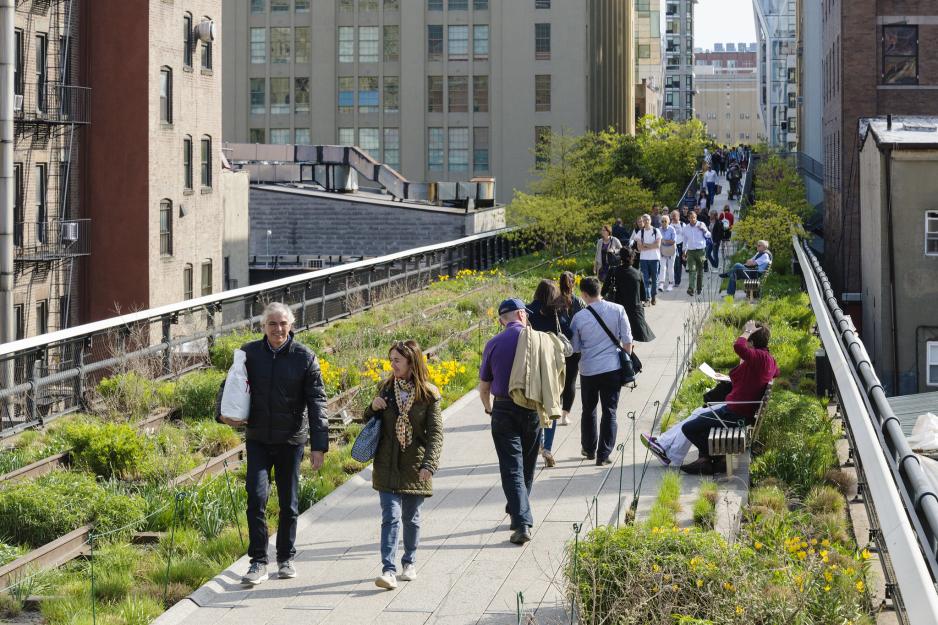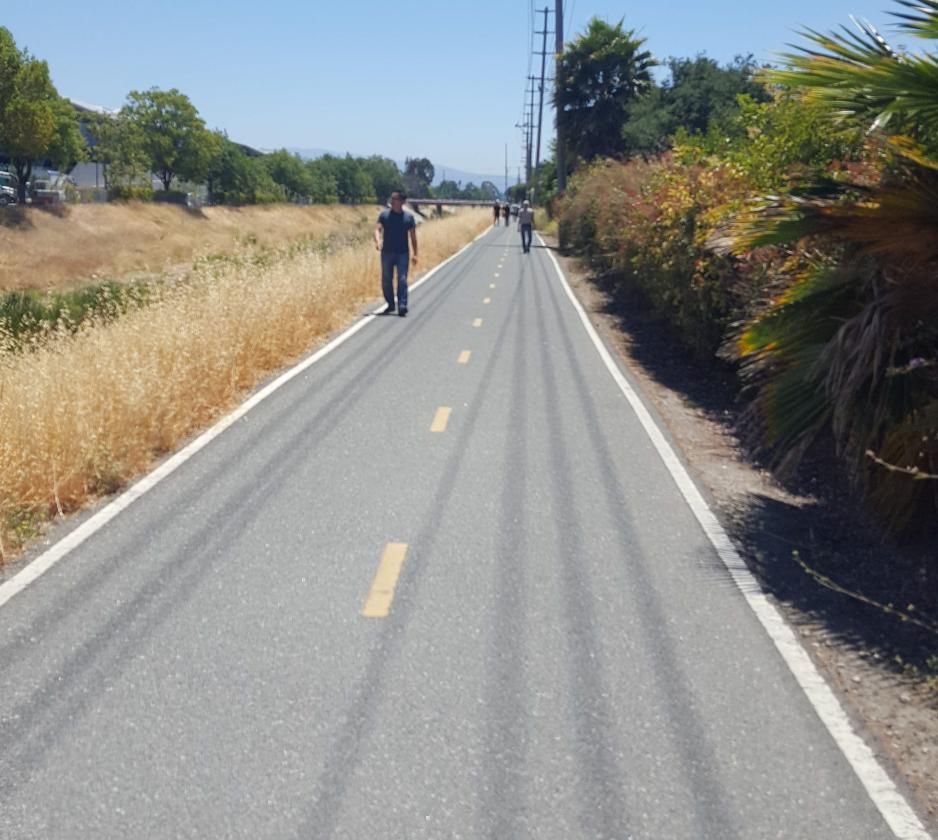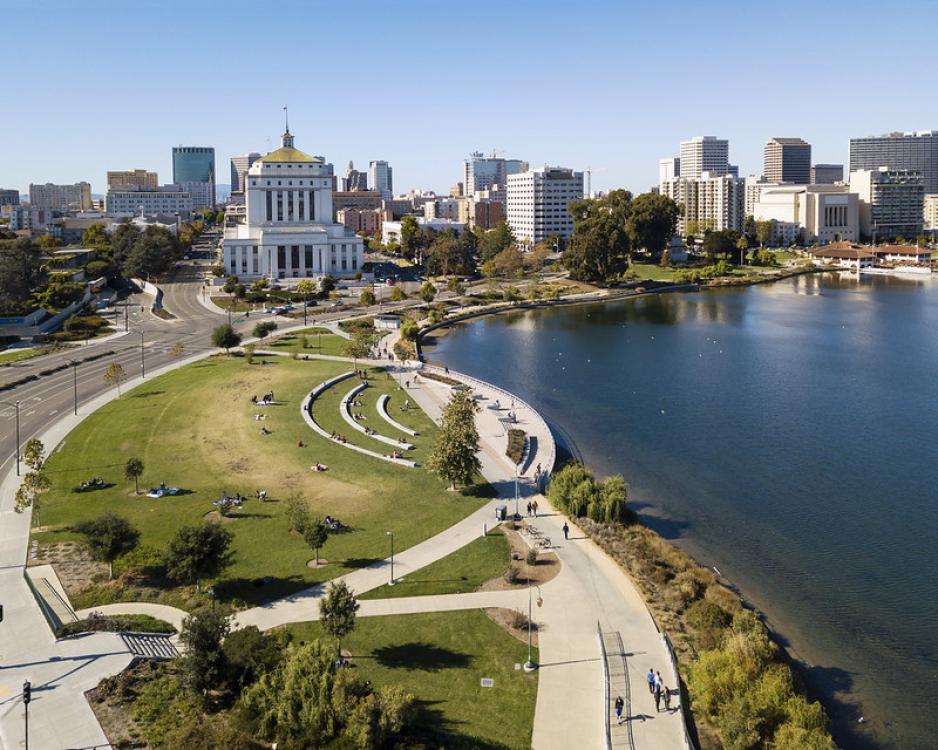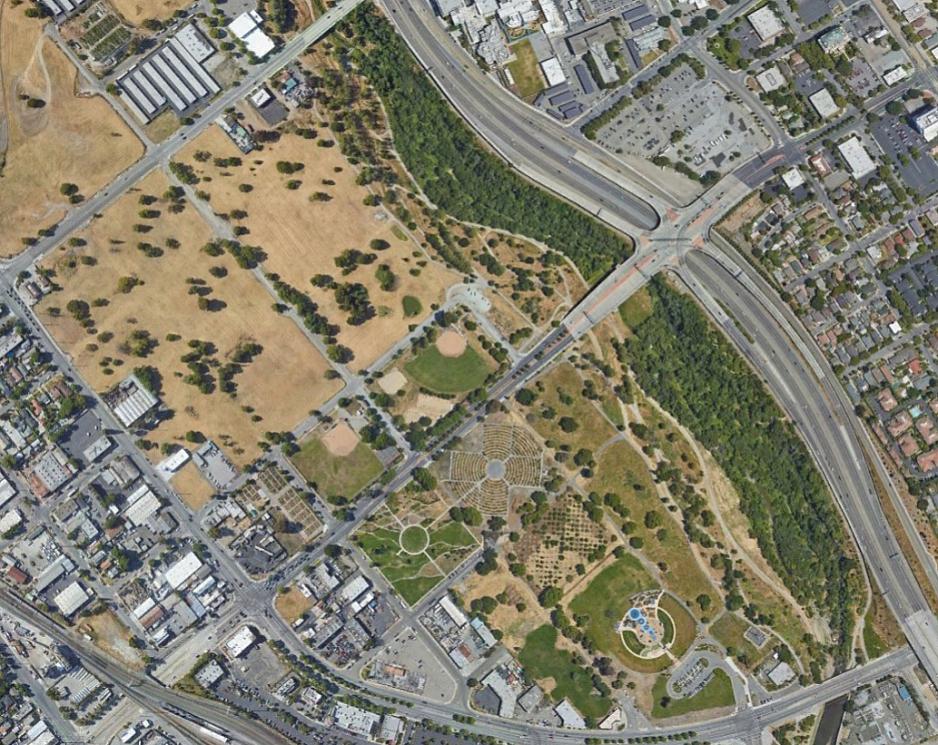Ensure quantity and interconnectedness of open spaces near transit as development occurs.
Provide connected open spaces by physically or visually linking to natural resources, landscape, and topography where feasible. Connect new public and semi-public open spaces to existing networks of local and/or regional pedestrian and cycling routes to provide opportunity for alternate modes of transportation and recreation.
Pursue the use of excess land adjacent to transit and roadway rights-of-way, and under elevated structures where available. Unused space beneath elevated transit lines and roadways can be perceived as dead space, creating physical and psychological barriers. Create designed open spaces in these underused areas to further connect with pedestrian and cycling networks.
Ensure opens spaces are strategically located within a quarter mile radius (5-minute walk) from all residents in urban areas. Open spaces of all sizes are valuable and should be sized appropriately based on available space and public need.
Small public spaces that occur between buildings (such as pocket parks, parklets, plazas, paseos and squares) form part of the pedestrian network that is critical to public life in urban areas. Small public spaces should welcome pedestrians to linger, sit, relax, watch or interact with others, or provide formal or informal play areas for children. Play areas and public art are often one in the same in small public spaces. Avoid creating inaccessible spaces where maintenance or lack of public surveillance may be an issue.
Consider linear parks: transportation corridors and natural geographical features, such as streams and rivers, offer unique opportunities for developing linear parks. These features present possibilities for both aesthetics and connectivity for surrounding communities. Linear parks create community corridors with unique character and improve walk and bike access to city and regional destinations.
- Identify existing and potential linear park corridors in general plans and other large-scale planning documents. Use excess land adjacent to transit and roadway rights-of-way, and under elevated structures and/or natural geographic features such as streams and rivers.
Edges or boundaries, at the exterior of a neighborhood or urban area, may provide opportunities for a district greenbelt, recreational amenities, open space and circulation links with other destinations.
